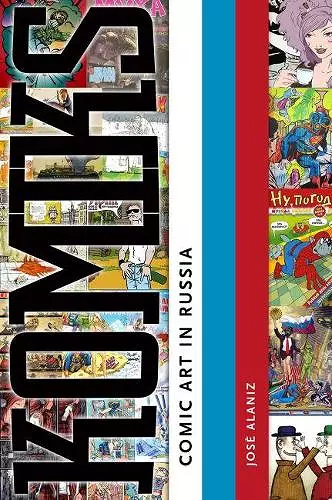Komiks
Comic Art in Russia
Format:Paperback
Publisher:University Press of Mississippi
Published:13th Feb '14
Currently unavailable, our supplier has not provided us a restock date

José Alaniz explores the problematic publication history of komiks--an art form much-maligned as ""bourgeois"" mass diversion before, during, and after the collapse of the USSR-- with an emphasis on the last twenty years. The book provides heretofore unavailable access to a rich artistry through unique archival research, interviews with major artists and publishers, and readings of several artists and works--many unknown in the West. The study examines the dizzying experimental comics work of the late Czarist and early revolutionary era, caricature from the satirical journal Krokodil, and the postwar series Petia Ryzhik (the ""Russian Tintin""). Detailed case studies include the Perestroika-era KOM studio, the first devoted to comics in the Soviet Union; post-Soviet komiks in contemporary art; autobiography and the work of Nikolai Maslov; and women's komiks by such artists as Lena Uzhinova, Namida and Re-I. Author José Alaniz examines issues such as anti-Americanism, censorship, the rise of consumerism, globalization (e.g., in Russian manga), the impact of the internet, and the hard-won establishment of a comics subculture in Russia.
Komiks have often borne the brunt of ideological change--thriving in summers of relative freedom, freezing in hard winters of official disdain. This volume covers the art form's origins in religious icon-making and book illustration, and later the immensely popular lubok or woodblock print. Alaniz reveals komiks' vilification and marginalization under the Communists, the art form's economic struggles, and its eventual internet ""migration"" in the post-Soviet era. This book shows, as many Russians expressed about their own experiences in the same era, that komiks never had a ""normal life.""
ISBN: 9781628460506
Dimensions: 220mm x 144mm x 25mm
Weight: 418g
280 pages